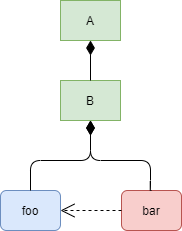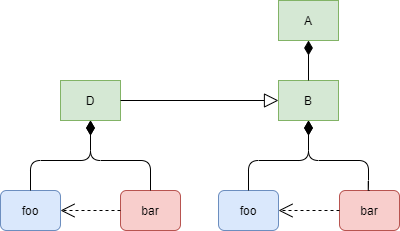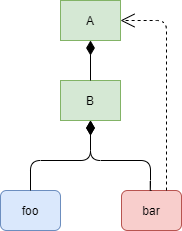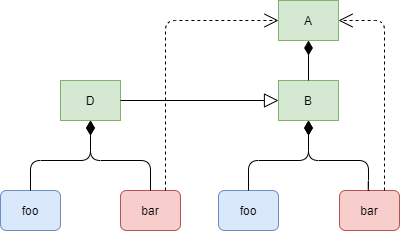modelx v0.10.0 (17 Sep 2020)#
This release introduces the following enhancements and changes.
Enhancements#
Introduction of reference mode
References now have reference mode, an attribute to control how the values of their derived References are determined when the values are core modelx objects, such as Spaces or Cells. The reference mode attribute can be set to either “absolute”, “relative” or “auto”. Following methods are introduced to set References by explicitly specifying their reference modes.
UserSpace.absref()for setting absolute ReferencesUserSpace.relref()for setting relative ReferencesUserSpace.set_ref()for setting a Reference in a specified reference mode
When a Reference is in the absolute mode, its derived Reference is bound to the same object as the base Reference.
When a Reference is in the relative mode, its derived Reference is bound to an object whose relative position to the derived Reference is consistent to the relative position of the object referenced by the base Reference to the base Reference. When no such value exists, an Error is raised.
When a Reference is in the auto mode, its derived Reference is bound relatively when possible, or absolutely when not possible.
Illustration
In the diagram below, A is a UserSpace,
B is a child UserSpace of A, and foo is a child Cells of B.
The next code defines bar in B as an absolute Reference to foo:
>>> B.absref(bar=B.foo)

When a new UserSpace D is derived from B,
the derived Reference bar in D is bound to foo in B:
>>> D.bar
<Cells foo(x) in Model1.B>

Alternatively, bar in B can be defined as an relative Reference
as below:
>>> B.relref(bar=B.foo)
In this case, the derived Reference bar in D
is bound to foo in D:
>>> D.bar
<Cells foo(x) in Model1.D>

Alternatively, bar in B can be defined as an auto Reference
by the assignment operation:
>>> B.bar = B.foo
Since relative referencing is possible, D.bar is bound to D.foo:
>>> D.bar
<Cells foo(x) in Model1.D>
In the next example, B.bar can be bound to A
only in absolute mode or auto mode. Trying to bound B.bar
to A in relative mode will raise an Error, because
A is out of the tree originated from B and no corresponding
object exists for D.bar:
>>> B.absref(bar=B.foo) # in absolute mode, or
>>> B.bar = B.foo # in auto mode

In either mode, D.bar is bound to A:
>>> D.bar
<UserSpace A in Model1>

Backward Incompatible Changes#
Prior to this version, all References are in the absolute mode.
Now, the Reference assignment operation assigns modelx objects in auto mode,
which may result in some references being bound to unintended objects
when relative referencing is possible. These References now need to be
set explicitly as absolute References either by UserSpace.absref()
or UserSpace.set_ref().
Bug Fixes#
Bug where Excel files referenced by
ExcelRangewere not saved when they were not modified.
